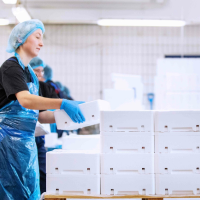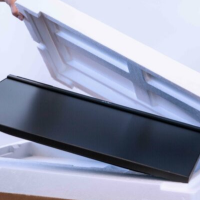EPS: Safeguarding Life and Nature
Expanded Polystyrene (EPS) is not just a remarkable material used in everyday items; it plays a crucial role in protecting what is most valuable to us – from our children's safety to the health of our planet. This article delves into the diverse applications of EPS, showcasing its vital role in personal safety, horticulture, and beekeeping, and how it contributes significantly to both human wellbeing and environmental sustainability.
EPS Protects What Matters the Most
|
Chances are we all grew up riding in EPS car seats, where mothers and fathers appreciate the lightweight and shock absorption characteristics that make EPS the material of choice for many a piece of personal protective equipment. Because it is composed of 98% air, it is also what makes life vests and surfboards float. An important benefit of using EPS in gear is the reliability of moulded EPS pieces in absorbing impacts under a broad range of circumstances. EPS is also not impaired by common chemicals that can affect other materials and it maintains its protective qualities over time. |
EPS Helps Automobiles Lose Weight

Weight is the enemy of most automakers. It takes energy to move, and stop, mass,. As a result, many automakers are looking to EPS components to help reduce the weight of their products and improve overall fleet fuel economy. EPS is widely used in front and rear bumpers to absorb shocks, while weighing as little as possible. EPS is also used in side-impact protection systems. It is also used in bespoke parts such as the moulding to keep tyre repair kits in place without rattling and banging. For some more examples, click here. |
EPS Saves Lives at Se
|
Portuguese company Noras Performance produces a remote-controlled lifesaving buoy called U-Safe. Thanks to it being operated by remote control, a person onshore or a boat can steer the U-shaped buoy to someone in the water to transport her or him to safety. BEWI Plastimar in Portugal supplies Noras Performance with an EPS part that protects the onboard electronics of the buoy from shocks and rough weather. The electronic controls are essential to steering the electric turbines remotely and kilometres away. NORAS Performance has been delighted with the results as EPS properties fulfilled the requirements needed, especially on the protection and shock absorption of the buoy. |
EPS Keeps Food Safe
 Food waste is a major environmental problem. Luckily, EPS provides a solution. Food waste is a major environmental problem. Luckily, EPS provides a solution.
Around 88 million tonnes of food goes to waste every year in Europe, according to the European Commission. That has a huge environmental impact, accounting for 6% of total EU greenhouse gas emissions for food that was produced but never consumed, according to the Commission. Reducing food waste is a triple-win, saving good food for human consumption, helping consumers save money and lowering the environmental impact of food production, transportation and disposal. With its superb insulation and shock-absorbing qualities, EPS packaging is widely used to keep fish, meat, fruit and vegetables fresh longer and protect them from damage during transportation. Unlike some cellulose-based materials, EPS supports hygiene because it resists humidity, preventing the spread of bacteria, mould and fungi, thus keeping food safe. |
EPS Keeps Fish Fresh
 EPS is the leading market solution in the protection of fish and fish products from sea to sales counters across the globe. This is due to its unparalleled thermal performance, impact cushioning and stacking strength as well as its established eco-credentials. EPS is the leading market solution in the protection of fish and fish products from sea to sales counters across the globe. This is due to its unparalleled thermal performance, impact cushioning and stacking strength as well as its established eco-credentials.
Regulations require professional fishermen and distributors to comply with strict temperature standards to ensure the freshness of the catch. Fish market professionals need a material that is economical and hygienic but at the same time tough, waterproof and lightweight. EPS ticks all the boxes. EPS’s exceptional impact resistance derives from the unique cellular matrix of the EPS ‘foam’ – effectively 98% air bonded with 2% polystyrene. That cellular structure is also virtually impermeable to water. EPS boxes are also highly resistant to heat transfer as well as being extremely lightweight. As a result, fish boxes made of EPS are the ideal material to ensure that the day’s catch arrives at your plate as fresh as it left the sea. They keep fish cold from catch until delivery, ensuring optimum safety, freshness, and quality and allowing fish caught in the EU to be exported worldwide. No other fish box material comes close to EPS. Many studies have shown that EPS containers provide the best insulation of all common packaging materials, keeping temperatures below 5.0°C for more than 72 hours. Moreover, a 2011 life cycle analysis by PricewaterhouseCoopers analysed the environmental impacts of several fish box materials, including EPS and cardboard. The study showed that EPS has a smaller carbon footprint than alternative packaging, requiring minimal energy and water inputs in production with almost no production waste. |
Broken White Goods? Not with EPS!
 Although extremely lightweight, EPS packaging is an impressively protective and versatile material for the transportation and storage of large “white goods”, such as washing machines, refrigerators and ovens. Its outstanding protective properties have made EPS a favourite packaging material for manufacturers worldwide for the past 40 years. Although extremely lightweight, EPS packaging is an impressively protective and versatile material for the transportation and storage of large “white goods”, such as washing machines, refrigerators and ovens. Its outstanding protective properties have made EPS a favourite packaging material for manufacturers worldwide for the past 40 years.
The transportation of large white goods requires a material that has exceptional cushioning properties and high tensile strength so that goods arrive to customers without damage. Large white goods also require a material that can be adapted to the specifications of the individual product and process to transport high-value products to consumers safely, saving resources along its entire life cycle, including during production and transport, and avoiding product waste. These days it is not enough to be low-cost, however. Even the most tried and tested materials need to stand up to environmental scrutiny. The good news: Because EPS contains 98% air and is extremely lightweight, its use saves energy and reduces CO2 emissions across its entire life cycle. Moreover, most white goods retailers take back their packaging after they deliver their wares, making it easier to collect and recycle EPS again and again. |
EPS Keeps Electrical and Electronic Equipment Safe
 Lightweight and shock-resistant, EPS packaging is widely used to provide protection and safety to a variety of high-value electrical and electronic goods from stereos to TV displays. It protects them all due to its unique ability to shield them against both shocks and temperature changes. Lightweight and shock-resistant, EPS packaging is widely used to provide protection and safety to a variety of high-value electrical and electronic goods from stereos to TV displays. It protects them all due to its unique ability to shield them against both shocks and temperature changes.
EPS has a high energy absorption index. That means it is an ideal material for protecting sensitive products during transportation and storage. Its exceptional impact resistance derives from the unique cellular matrix of the EPS ‘foam’ – effectively 98% air bonded with 2% polystyrene. No other material comes close to EPS when it comes to impact resistance. This is even more fundamental today than ever before, as design and distribution requirements for transport packaging become more demanding in the global, sustainable and circular economy. |
EPS Protects Seedlings

EPS is lightweight, waterproof and a good thermal insulator—all qualities that are good for protecting young plants and bees besides other valuable goods and people. Plant nurseries often use EPS trays to grow young seedlings and ship them worldwide. The trays protect the seedlings from physical and thermal shocks and don’t leak. And the bright white trays reflect light, which helps the plants grow. In many cases, the horticultural trays are re-used many times before being recycled. You can learn more about the recycling of EPS packaging here. |
EPS Protects Bees
 Did you know that many of the world’s professional beekeepers use EPS beehives? The beehives are lightweight, making it easy for beekeepers of all ages to move from place to place to help the bees pollinate crops and find new sources of food. In many countries, EPS beehives have completely replaced heavy wooden boxes. Did you know that many of the world’s professional beekeepers use EPS beehives? The beehives are lightweight, making it easy for beekeepers of all ages to move from place to place to help the bees pollinate crops and find new sources of food. In many countries, EPS beehives have completely replaced heavy wooden boxes.
The exceptional insulation properties of EPS also do a better job of keeping bees warm in the winter and cool in the summer, allowing them to avoid stress. That’s a valuable contribution to the protection of bees and biodiversity. |
EPS Saves Lives. Literally.
 When the companies making the vaccines to protect us from COVID-19 needed packaging that could keep their products at -70°C for up to 3 days, what did they turn to? You guessed it: EPS. When the companies making the vaccines to protect us from COVID-19 needed packaging that could keep their products at -70°C for up to 3 days, what did they turn to? You guessed it: EPS.
Several COVID-19 vaccines are being delivered exclusively in EPS packaging because of its unique combination of outstanding thermal insulation, excellent shock protection and lightweight – important when vaccines are being delivered by air freight around the world. The vaccine vials are packed in EPS containers, which are then filled with dry ice. The EPS containers are sometimes encased in cardboard for additional protection on long journeys. EPS is also the packaging of choice for many other medical uses such as cool boxes for human organ transplants. |

 Lightweight, shock-resistant, and an exceptional insulator, EPS is widely used in bicycle, ski and snowboard helmets, children’s car seats and life vests – applications in which both regulators and users demand exceptional safety.
Lightweight, shock-resistant, and an exceptional insulator, EPS is widely used in bicycle, ski and snowboard helmets, children’s car seats and life vests – applications in which both regulators and users demand exceptional safety. Because it is almost as light as air and floats, EPS has long been used in life vests and rescue rings for swimming pools and boats. But it is also used to package and protect parts in remote-controlled buoys because of its excellent shock-absorption qualities.
Because it is almost as light as air and floats, EPS has long been used in life vests and rescue rings for swimming pools and boats. But it is also used to package and protect parts in remote-controlled buoys because of its excellent shock-absorption qualities.